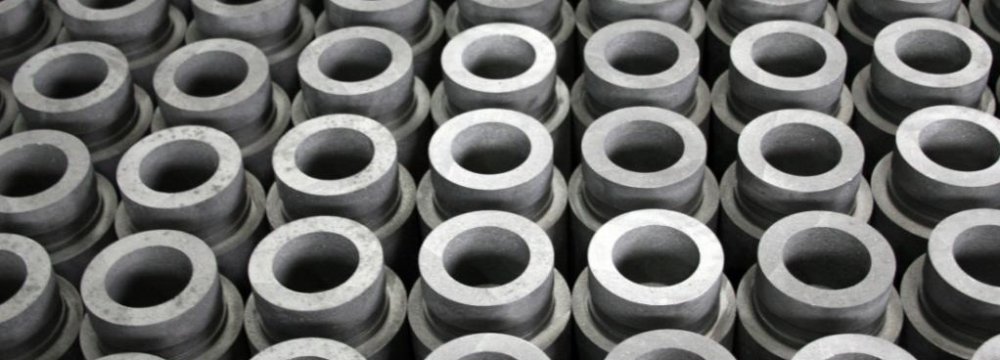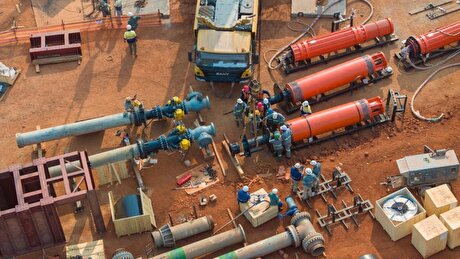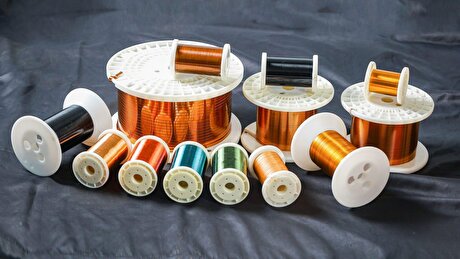
Iran Steel Industry Hamstrung by Graphite Electrode Shortage

“Unreasonable graphite electrode price hikes due to limited supply are one of the main challenges facing the steel industry today,” says Hossein Ahmadi, managing director of Khorasan Steel Company.
Graphite electrode is an indispensable material used in electric arc furnace steelmaking, which, considering Iran’s cheap energy costs, is the more efficient and less expensive steelmaking method compared to blast furnaces. About 70-75% of Iranian mills use EAF.
The material has a crystalline carbon structure capable of transmitting electric currents while withstanding high temperatures. It carries the electricity that melts the scrap iron and steel, or–in Iran’s case, mostly–sponge iron. Graphite electrode is made from petroleum coke mixed with coal tar pitch.
“Iran sources electrodes mostly from India and China, but imports are under pressure now as a result of a shortage in the international market,” Ahmadi said.
“Only certain countries can produce graphite electrodes, and even fewer, namely the United States, Germany and Japan, have the know-how to produce its raw material, petroleum coke,” he was quoted as saying by Chilanonline as saying.
“We couldn’t import any electrode during the sanctions period. Things did somehow improve when sanctions were lifted, but now the new issue is that Iran’s main electrode suppliers are having trouble procuring raw materials.”
International sanctions related to Iran’s nuclear energy program were lifted in January 2016 as part of a deal Tehran signed with world powers a year earlier.
According to Ahmadi, the issue is also affected by the mounting environmental concerns in China.
Electrode plants have been mandated by the Chinese government to cut production pollution, which has effectively frozen certain producers’ operations.
Furthermore, increasing steel production in certain global markets has exacerbated the situation by making supply tighter. Coupled with the increased usage of petroleum coke in the manufacture of lithium batteries and electric cars, the status quo is expected to persist until mid-2018.
The issue has dogged steelmakers for a few months now, as more costly raw materials boost finished prices–a development decried by local downstream users of steel products.
“Small companies are more anxious about this situation, because large producers usually have enough inventories of electrodes to deal with the current shortage over the next few months, and on the other hand, the suppliers of electrode prioritize their older customers under critical conditions,” Ahmadi said.
Members of Iran Steel Producers Association held a meeting earlier this month to address the “unprecedented” situation, according to a member of the association’s board of directors, Bahador Ahramian.
Statistics determined that growing electrode prices have added a 1,500-rial ($0.03) cost to each kilogram of steel made using EAF, to bring the total cost to 5,000 rials ($0.12).
Ahmadi noted that several Iranian companies have set up a joint venture to build Iran’s first graphite electrode manufacturing plant in light of the current shortage.
“Some 200 million will be invested by Novin Electrode Company, a joint venture between Iranian Mines and Mining Industries Development and Renovation Organization alongside Mobarakeh and Khorasan steel companies for the production of graphite electrodes,” he said.Ahmadi further said the machinery will be supplied soon and the plant is expected to be launched within one or two years.


Trump weighs using $2 billion in CHIPS Act funding for critical minerals

Codelco cuts 2025 copper forecast after El Teniente mine collapse

Electra converts debt, launches $30M raise to jumpstart stalled cobalt refinery

Abcourt readies Sleeping Giant mill to pour first gold since 2014

Barrick’s Reko Diq in line for $410M ADB backing

Nevada army depot to serve as base for first US strategic minerals stockpile

Tailings could meet much of US critical mineral demand – study

Viridis unveils 200Mt initial reserve for Brazil rare earth project

SQM boosts lithium supply plans as prices flick higher

Energy Fuels soars on Vulcan Elements partnership

Northern Dynasty sticks to proposal in battle to lift Pebble mine veto

Giustra-backed mining firm teams up with informal miners in Colombia

Critical Metals signs agreement to supply rare earth to US government-funded facility

China extends rare earth controls to imported material

Galan Lithium proceeds with $13M financing for Argentina project

Silver price touches $39 as market weighs rate cut outlook

First Quantum drops plan to sell stakes in Zambia copper mines

Ivanhoe advances Kamoa dewatering plan, plans forecasts

Texas factory gives Chinese copper firm an edge in tariff war

Energy Fuels soars on Vulcan Elements partnership

Northern Dynasty sticks to proposal in battle to lift Pebble mine veto

Giustra-backed mining firm teams up with informal miners in Colombia

Critical Metals signs agreement to supply rare earth to US government-funded facility

China extends rare earth controls to imported material

Galan Lithium proceeds with $13M financing for Argentina project

Silver price touches $39 as market weighs rate cut outlook

First Quantum drops plan to sell stakes in Zambia copper mines

Ivanhoe advances Kamoa dewatering plan, plans forecasts

















